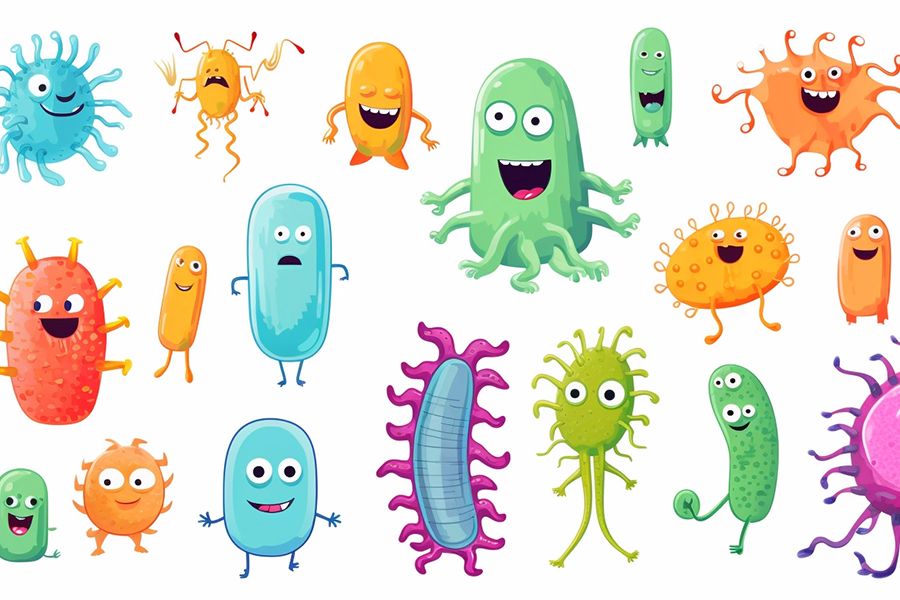Unveiling the Science: Can Bacteria Thrive in Shea Butter?

Shea butter, derived from the nuts of the African shea tree, has gained a reputation as a nourishing and moisturizing skincare ingredient. As more people embrace natural products, concerns about the potential for bacterial growth in shea butter have emerged. Let's delve into the science behind shea butter to understand whether it provides a conducive environment for bacteria and how to ensure the safety of this beloved skincare staple.
The Composition of Shea Butter
Shea butter is primarily composed of fatty acids, including oleic acid, stearic acid, and linoleic acid, along with vitamins A and E. This rich combination of nutrients contributes to its moisturizing and skin-nourishing properties. While shea butter is known for its stability at room temperature, its composition does not inherently create an environment conducive to bacterial growth.
Natural Antibacterial Properties
Interestingly, shea butter possesses natural antibacterial properties that can help preserve its integrity. The presence of cinnamic acid, a compound with antimicrobial and anti-inflammatory characteristics, contributes to the butter's ability to resist certain bacterial strains. This natural defense mechanism adds an extra layer of protection against microbial contamination.
Processing and Storage: Critical Factors
The potential for bacterial growth in shea butter largely depends on how it is processed and stored. Unrefined or raw shea butter, obtained through traditional methods, may contain impurities that could introduce bacteria. On the other hand, refined shea butter undergoes a filtration and purification process, reducing the likelihood of bacterial contamination.
Proper storage is equally crucial. Shea butter should be kept in a cool, dry place, away from direct sunlight and moisture. Exposure to heat and humidity can compromise the stability of shea butter and create conditions that may foster bacterial growth. Using clean and dry utensils when scooping out shea butter can also contribute to maintaining its purity.
Incorporating Preservatives: A Controversial Choice
In the quest for extending the shelf life of shea butter and minimizing the risk of bacterial growth, some manufacturers may choose to incorporate preservatives. However, this practice is controversial among proponents of all-natural skincare. The addition of preservatives may raise concerns for those seeking products with minimal synthetic additives.
Consumers interested in preservative-free options should focus on high-quality, unrefined shea butter and prioritize proper storage practices to ensure its longevity without compromising on purity.
Best Practices for Maintaining Shea Butter Integrity
To maximize the benefits of shea butter while minimizing the risk of bacterial contamination, consider the following best practices:
- Choose Quality Sources: Opt for reputable brands that prioritize quality and source their shea butter responsibly.
- Check for Purity: Read labels carefully to ensure you are getting pure shea butter without unnecessary additives.
- Storage Matters: Keep shea butter in a cool, dry place, preferably in an airtight container, to preserve its stability.
- Clean Application: Use clean hands or utensils when scooping out shea butter to avoid introducing contaminants.
- Regular Inspection: Periodically check the appearance and smell of your shea butter. Any signs of discoloration, off-putting odors, or changes in texture may indicate spoilage.
Conclusion: Safely Embracing the Beauty of Shea Butter
In conclusion, shea butter, when sourced and stored correctly, does not provide an ideal environment for bacterial growth. Its natural composition and antibacterial properties contribute to its stability. By selecting high-quality, unrefined shea butter and practicing proper storage, skincare enthusiasts can confidently embrace the beauty of shea butter without compromising on safety. As with any skincare product, awareness, and attention to quality are key in maintaining the integrity of this cherished natural ingredient.
Latest Posts
-
Celebrating Women's History Month: Empowering Your Skin Care Journey
-
Soothing the Storm: The Role of Body Butter in Easing Rashes
-
Exploring Potential Side Effects of Shea Butter
-
Unveiling the Science: Can Bacteria Thrive in Shea Butter?
-
Dermatologist Insights: Unveiling the Truth About Shea Butter in Skincare
-
Proceed with Caution: Understanding When Not to Use Shea Butter
-
Striking the Balance: How Often to Indulge in the Luxury of Body Butter
-
Embracing Youthful Radiance: The Magic of Body Butter for Aging Skin
-
Nurturing Your Skin: Body Butter and Rosacea
-
Unveiling the Beauty Secrets: Shea, Cocoa, and Mango Body Butters
-
Celebrate International Women's Day
-
Body Butter After Bathing
-
The FYI on Body Butters
-
Let's Talk Crepey Skin
-
Patrick Smith – Extreme Dry Feet
-
Ashleigh R. – Cracked Heels
-
The Difference Between Essential Oils & Fragrance Oils
-
What Cracked Feet Say About Your Health
-
Why Do My Body Butters Melt In Warmer Weather
-
Let's Break It Down
Quote of the day
“Anyone who keeps the ability to see beauty never grows old.“



